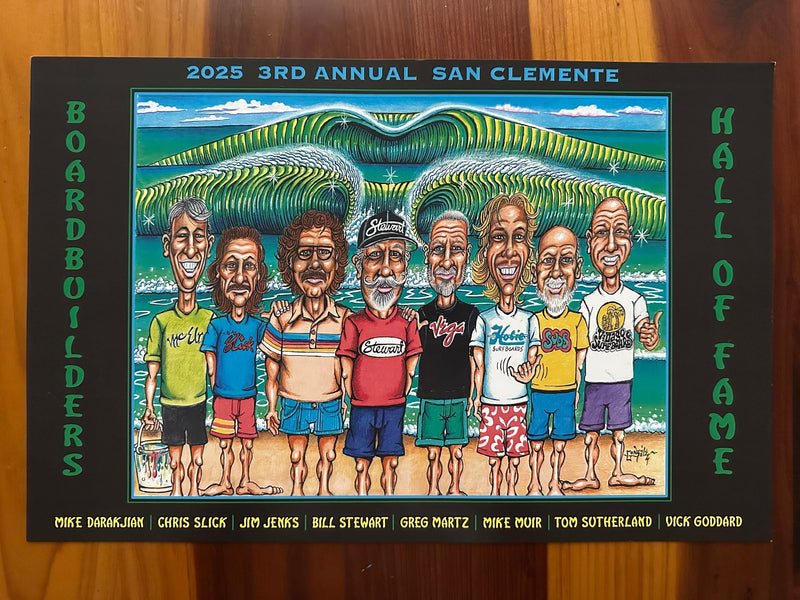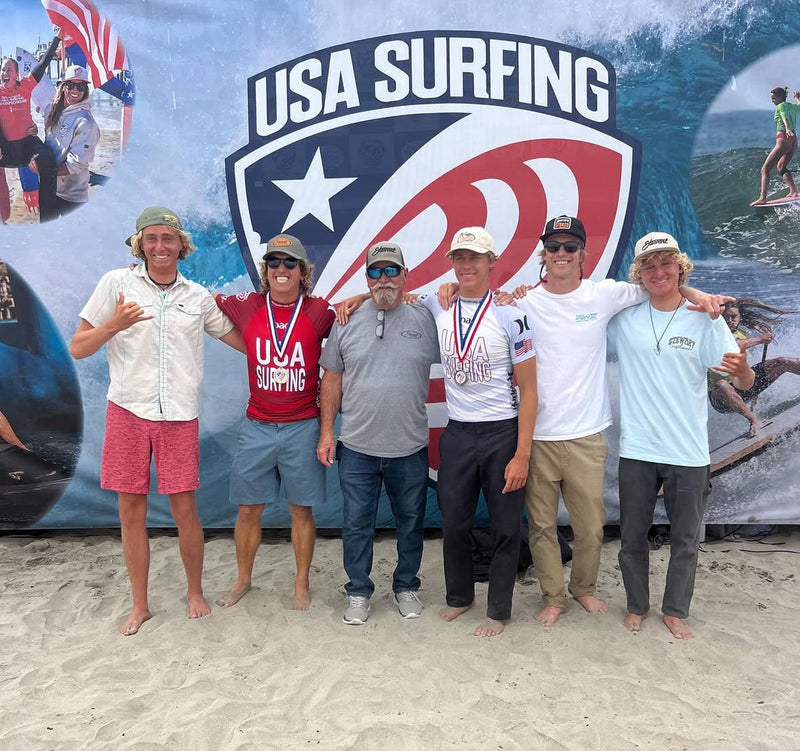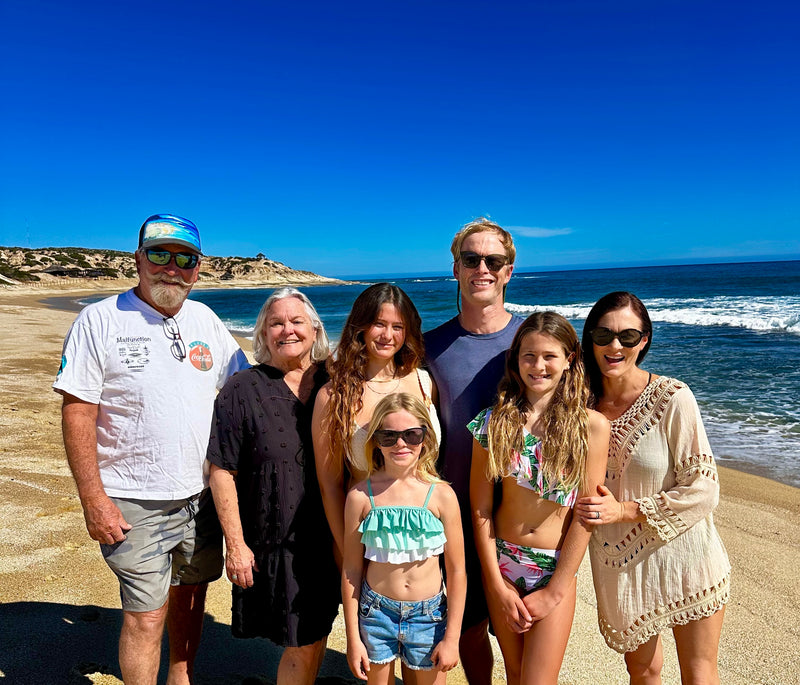[Timeline] History of Bill Stewart: Father of the Modern Longboard
•Posted on July 02 2019
![[Timeline] History of Bill Stewart: Father of the Modern Longboard](http://stewartsurfboards.com/cdn/shop/articles/Bill_FatherofModernLongboard.jpg?v=1563639123&width=2000)
So, how did Bill Stewart become “Father of the Modern Longboard”?
Like most surfers, the Father of the Modern Longboard started on a longboard—a 9’2” to be exact. He then rode professionally as, yep, a shortboarder. Stewart just didn’t understand why 60’s-style longboards were so slow and couldn’t be surfed aggressively (1), so he set out to change things.
The Father of the Modern Longboard wasn’t born a great shaper. He admits that his first board, shaped in Florida, was barely rideable. He took an old log, grinded down the rails, peeled off the glass, took out the blank inside to reshape it, and covered the entire thing in laminating resin.
It stuck to the sand.
There was no way Stewart could’ve known that he’d come to shape thousands of highly-customized masterpieces and the surfing industry itself.
During the shortboard revolution, when he wasn’t working at a shop sanding, polishing, and airbrushing, he was experimenting with shorter surfcraft, and taking what he’d learned and then building on it.
In the mid-seventies, Stewart and his friend Mike Beschen (father of surfers Shane & Gavin Beschen) put on a surf contest at T-Street. Although Stewart won the contest, he wondered why his boards noserode great but didn’t have the speed and maneuverability of a shortboard—he wanted to shortboard a longboard from the tail, with high-speed, figure-8 roundhouses despite the length. The Father of the Modern Longboard envisioned a model and created it.
While everyone was riding longboards with big 9-10” single fins, he put a smaller 6” center fin, along with two 3 ¼” side fins, 16” up from the tail. This, along with the super hard edges, narrow vee’d tail with double concave for release & speed, and ultra-light Clark Foam blanks with light glassing, completely changed the performance of a longboard to ride like a shortboard—The Father of the Modern Longboard called it the Hydro Hull.
After he created this completely revolutionary high-performance longboard, Stewart worked with Clark Foam to design 11 plugs for blanks. One of those plugs, the 95-S, was the thinnest longboard blank ever made and had the perfect thickness flow nose to tail, ideal proportions, and just enough rocker.
This blank became the go-to choice for high-performance longboard shapers worldwide, allowing other shapers to emulate The Father of the Modern Longboard's revolutionary designs in their own boards. That’s when the worlds of shortboarding and longboarding collided.
Using this new shaping technology, surfers had the best of both board worlds. Longboarders could now run up to noseride, step back for a shortboard-style cut-back, and then throw it off-the-lip. This revolution took The Father of the Modern Longboard international, as far as Japan, Australia, France, England, Peru, and more, to showcase its versatility. To this day it remains the design standard for modern longboards.
A revolutionary board shape isn’t the only chapter in the story of The Father of the Modern Longboard—Stewart also co-founded the Futures Fins box. There are only two types of fin boxes available worldwide, and Futures was designed to be lighter, stronger, and easier to install than the competition. It’s now being used in many different surfboard brands around the world.
Bill Stewart, The Father of the Modern Longboard, continues to handcraft and customize surfboards at his namesake surf shop Stewart in San Clemente, California. To learn more about his beginnings, his unique path, and his influence throughout surfing history, check out the timeline below.
1951
Bill is born and starts experimenting with water dynamics throughout his childhood by towing anything & everything behind a neighbor’s boat on the lake he grew up on in Florida.
1964
At age 12, Bill surfs for the first time and contracts the surfing bug.
1965
Bill mows 32 lawns for $1 each to buy his first surfboard.
1967
The Father of the Modern Longboard shapes his first board!
1970
Bill pays his dues in high school, buys a 1963 Ford van for 500 bucks, and takes off for California where he lands in Encinitas, CA, and can now live to surf!
1971
...well, not quite. Bill runs out of money pretty quick and moves home in order to save some cash working construction and taking art classes at the Art Institute of Fort Lauderdale.
1972
A year later, with some savings under his belt, Bill can live to surf for real this time! He moves back to CA, to San Clemente (his dream location), and gets his first job in the surf industry. He polishes, sands, and becomes the second person ever to airbrush a surfboard at Rick James’ surfboard factory, while learning everything he can about shaping. The Father of the Modern Longboard will go on to work for Ocean Pacific, South Shore, and then Hobie.
1977
Behold—the Stewart Surfboards label is born in Laguna Beach! Bill begins as a one-man-band and manages everything from hand-painting and taking custom orders to selling air-brushed merchandise.
1978
Bill launches his own company “Stewart Surfboards” in the alley of broken dreams in Dana Point—although it doesn’t sound promising, he’ll continue to impact the surfing world through handcrafted boards, custom artwork, and surf contests for the next 42+ years to come.
1984
Bill invents the HydroHull, which takes his brand international and remains a design standard for the modern longboard to this day.
1985
As Father of the Modern Longboard, Bill flies to Japan to introduce the Hydro Hull technology and modern longboard design to the country for the first time.
Mid 90s
Bill is licensed to produce Hobie, Mickey Munoz, Herbie Fletcher, and Christian Fletcher surfboards, and Phil Edwards shapes in the Stewart factory for 12 years.
1996
Bill co-creates the Futures Fin box system.
1996 (also)
The Father of the Modern Longboard introduces his highest-performance longboard to date, the CMP, which remains the favorite of pro team riders for over 20 years.
1999, 2001, 2002
Colin McPhillips wins the ASP Men's World Longboard Tour on the CMP.
2018
Soleil Errico wins the WSL Women's World Longboard Tour and Tony Silvagni wins the World Longboard Championships in China, both on the CMP.
2019
The Father of the Modern Longboard, Bill Stewart, continues to handcraft and customize both short and longboards at his shop Stewart in San Clemente, CA, most recently introducing the high-pro Mighty Flyer model. 42+ years later, the legacy continues and carries on through the families Bill raised on surfing.
FINAL WORDS
The Father of the Modern Longboard made surfing one big family again—from longboarders, to shortboarders, to athletes, and artists, and anyone who wants to surf.
According to Bill Stewart, the modern longboard isn’t necessarily minimalistic, or a retro longboard, or more trendy—it’s designed to meet you on the level you’re at to become a better surfer.
The Father of the Modern Longboard believes that anyone can surf and that everyone should. He uses the latest surf technology and innovation to up your surfing game to where you want it to be.


